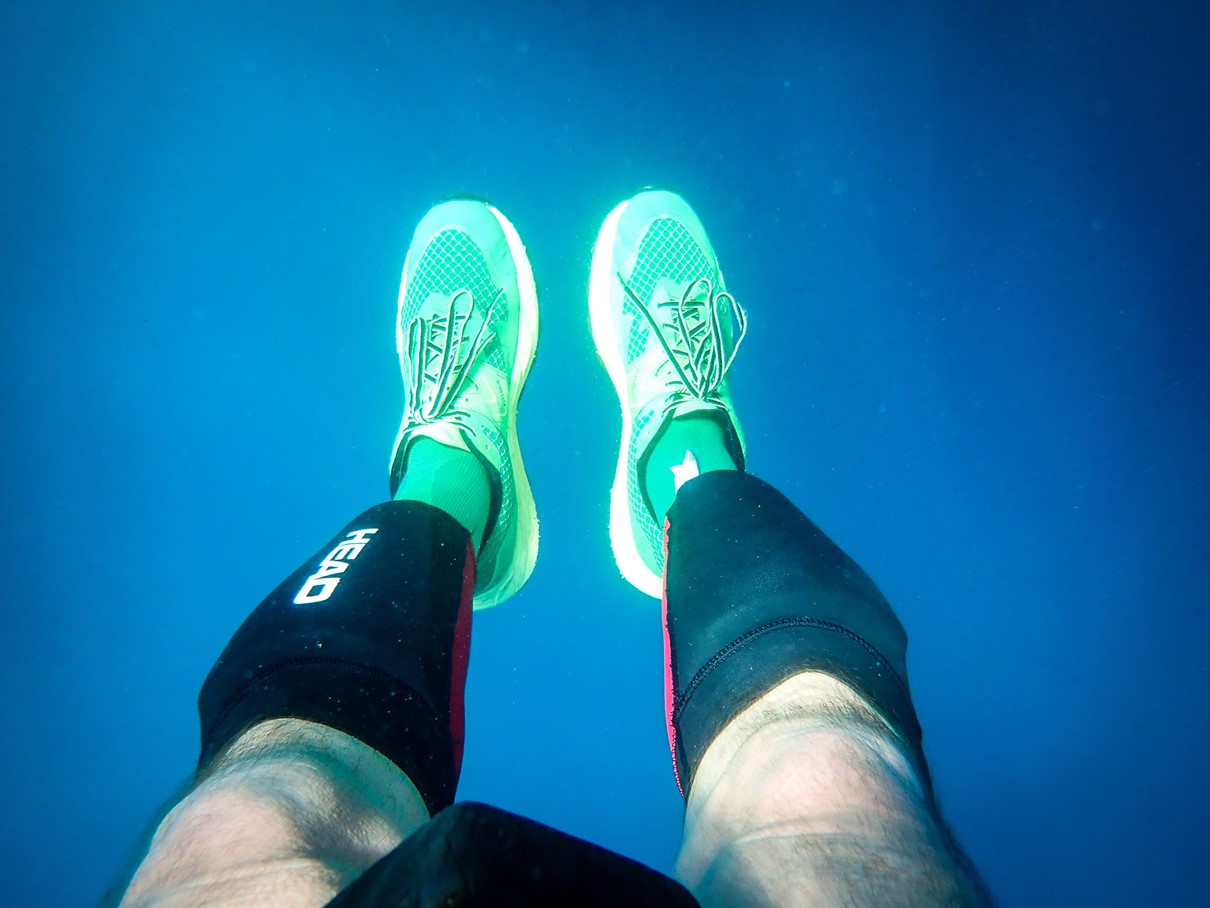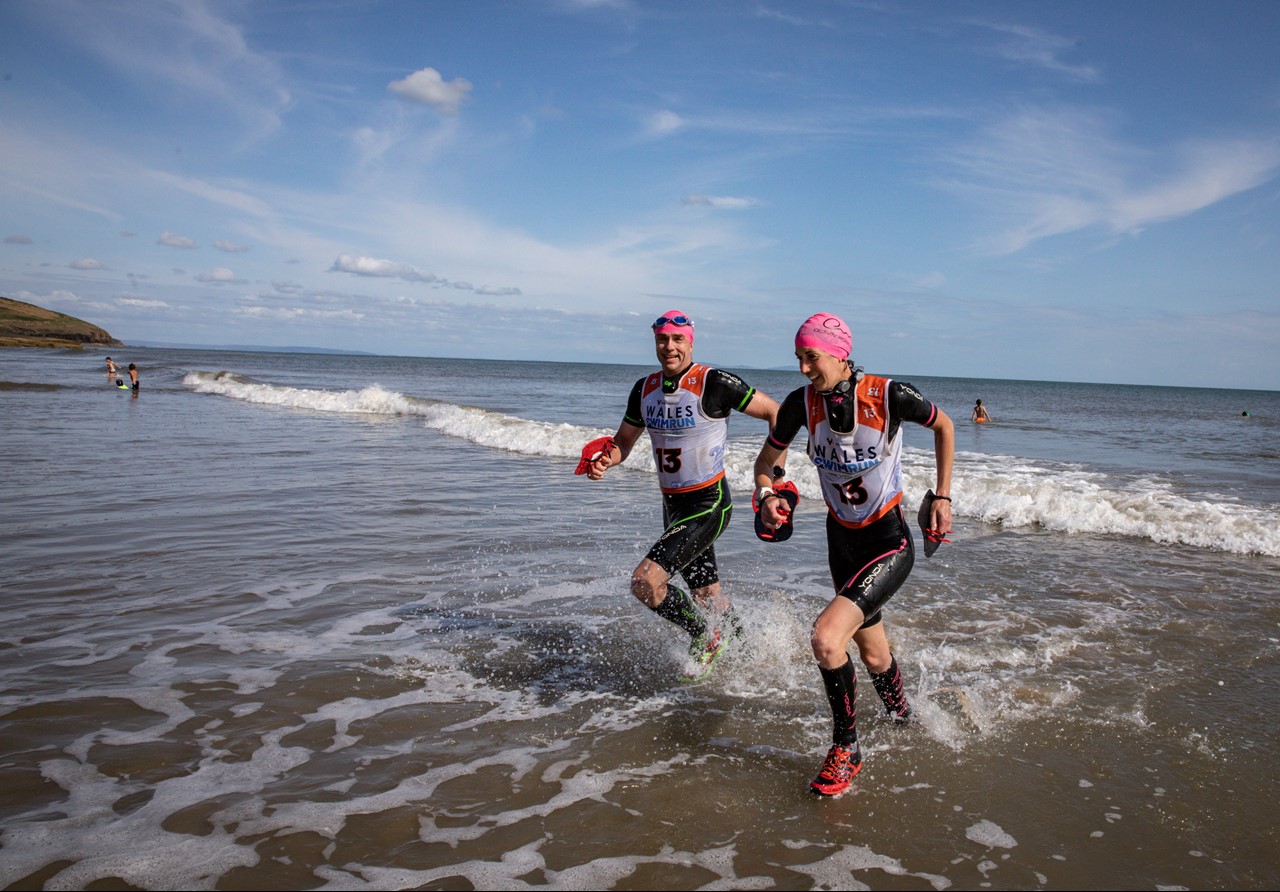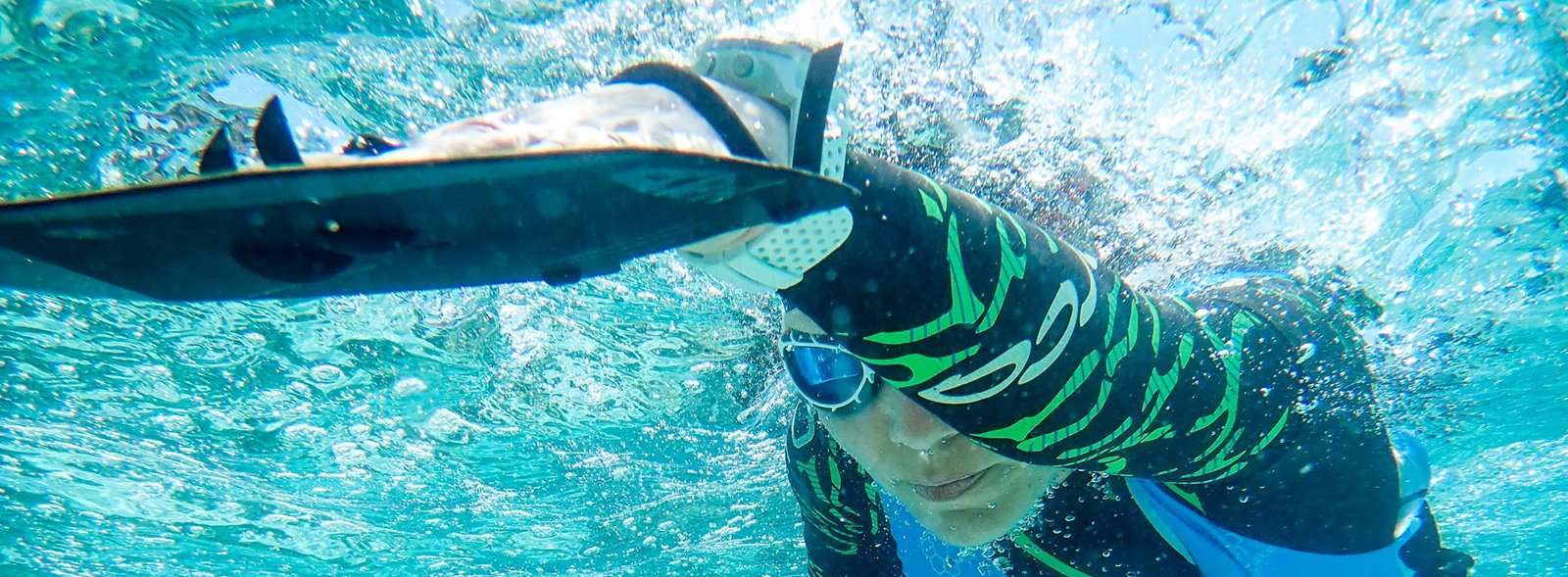Get the most out of your SwimRun Equipment
This is the second article in our series of three. The first was focused on hints and tips for first-timers. I hope you found it useful. This article will look at swimrun equipment, and then finally we will explore the topic of how to race together in part 3.
When I did my first swimrun race back in 2011, dedicated swimrun equipment hadn’t been invented. We raced with cut-off triathlon wetsuits, and used camelbacks for hydration (not great for drag!) and either tiny pool pull buoys or DIY versions; coke-bottles, kids flotation aids! Things have come a long way since then.

Let’s look at the modern swimrun equipment through the lens of the function it is performing:
Protection
You need to protect your feet based on the terrain you are racing on. I’m a natural running convert so I try to select the minimum possible for the terrain and distance. The shoes should have a low wet-weight and provide grip on slippery rocks/roots. Based on those factors there are multiple choices. I’ve raced in road racing flats and I’ve raced in technical trail shoes and almost everything in between.
The two choices that I have top of mind at the moment are my Vivo Hydra Esc and my Adidas Terrex Speed Pro 190. As I learn more about the race I’ll be able to refine my selection. Another area of protection is the lower legs. I don’t assume that it will be the case in Wales but when running through long grass with disease carrying Swedish ticks (like parts of the ötillö course) I like to wear long socks.
Warmth
It’s always tricky to manage temperature. You need to assess the length of the swims and the time you are likely to be in the water based on your swim speed. You also need to factor in the length of the runs between swims. I’ve been told that the water will be about 16 degrees which is not cold but you have to consider the air temperature before making your final decision. I’ll bring the swimrun wetsuit, sleeves and even a couple of choices of under vest to be able to choose on the day. If the water is cold (relative for you) I also recommend using ear plugs - cold water in the ears can cause dizziness and balance issues which are worth avoiding.
A neoprene headband is also a great piece of kit to have.
Being cold is no fun, and it drains significant energy. I put my first place (men’s team sprint distance) at the 2022 ötillö Utö principally down to the amount of rubber we had on! It was 8 degrees in the water and the air.
Floatation
Drag is the number #1 enemy of the swimmer. Swimming with shoes on does not help! A high buoyancy pull buoy is your friend. I use an Ark Keel+ but there are plenty of alternatives. The wetsuit also provides some buoyancy for the upper body. Some people use buoyant shin aids. I've tried them but I don’t like the sensation of running with them. I’m also not sure how much net gain you’d get if you have a large pull buoy and enough strength to hold the core and legs high in the water.
Propulsion
There is plenty of discussion about paddle size. For novice gear tips check out the first article. But in summary larger, stiffer paddles can be faster if you have the technique and strength to make them work for you. For potentially rough seas and long swim segments like in Wales I would err on the side of larger isn’t necessarily better.
Team synergy benefits
Drafting is a key skill for swimrun pairs (or even soloists looking to get on some quick feet). Drafting a swimmer allows you to swim faster for a given level of effort, or to use less energy to swim the same speed. It can negate the relative difference in swim speed between partners thus becoming one in the water. My personal preference is to draft rather than use a tether, but I’m very practiced at drafting. I will also always carry a tether even if I don’t intend to use it.
Rough seas and long swims can make unaided drafting difficult so it’s always good to have.
Looking at the swims on the course I see this as an event where we will use a tether. Some teams will use the tether throughout the event. If so, practice running tethered especially on technical trails. The tether itself needs to be elastic (have some give - being pulled off a rock before you are ready is never good) but not so elastic that it provides no assistance.

Vision
Being able to sight is important. Here in Sweden the brackish water actually makes it possible to swim without goggles and some do. As a contact lens wearer that isn’t an option for me. I like small goggles as I find them easier to get water tight and not interfere with the swim cap. I’ve tried polarized lenses, the idea being it’s easier to sight when the reflected sun is present, but I just go for clear lenses these days.
Fogging up after 5 minutes isn’t to be recommended so if you are thinking of using the pair that’s been at the bottom of your swim bag for the last year - it might be a good time for a new pair.
Safety
Mandatory for the event is a first aid pressure bandage and compass/watch compass plus one whistle per person.
Storage
Depending on your nutrition strategy (which you need to decide before race day) you may need somewhere to store a soft-flask and/or gels. It depends on how long and how hard you’ll be racing but typically I’ll be looking to take on at least 60g of carbs per hour. Based on your target, you then workout how much can come from on-course stops and how much you need to carry. Different wetsuits have different solutions. My old Ark Örno has very little storage so I use an undervest with pockets and/or put gels in the long socks.
We hope that has given you some ideas around swimrun equipment. In part 3 we will give some advice on how to race together, both in terms of preparation and execution.
Happy Swimrunning, Tom





